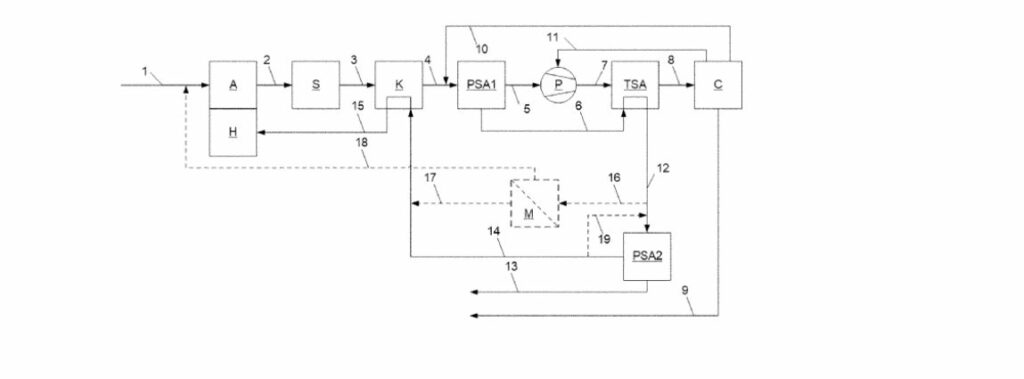The patent introduces a novel method that transforms carbon-containing inputs into hydrogen products. This involves the conversion of such inputs into a synthesis gas that predominantly consists of hydrogen and carbon dioxide.
A unique aspect of this invention is the fractionating process, which uses a device known as a pressure swing adsorber (PSA) to separate the synthesis gas into distinct fractions. Ultimately, this method enhances the separation of both hydrogen and carbon dioxide, enabling the production of pure hydrogen while allowing carbon dioxide to be either marketed as a product or safely disposed of.
Conversion Process
At the heart of this patent is the initial step of converting carbon-rich inputs into synthesis gas. This process involves reforming the carbon input and executing a water gas shift reaction. The result is a gas mix primarily comprising hydrogen and carbon dioxide. This foundational step sets the stage for further refinement and separation.
Pressure Swing Adsorption
A central feature of this method is the use of a pressure swing adsorber, or PSA. This device plays a crucial role in enriching the synthesis gas-related products. The PSA effectively splits the gas mix into two primary fractions: a high-pressure fraction depleted of carbon dioxide and a low-pressure fraction enriched with carbon dioxide. This separation is critical because it dictates the purity of the resulting hydrogen product.
Cryogenic Gas Fractionation
Following the PSA step, the carbon dioxide-rich fraction undergoes additional processing. Once compressed, it is subjected to cryogenic gas fractionation. This step enhances the purity of the carbon dioxide fraction, making it suitable for sale as a product or disposal through sequestration. The overall process reflects a meticulous approach to handling both hydrogen and carbon dioxide, optimizing the use of both gases.
Environmental Considerations
The outlined method not only emphasizes efficiency in hydrogen production but also proposes an environmentally responsible approach to carbon dioxide management. By ensuring that the carbon dioxide fraction is of adequate purity for sequestration, the patent aligns with efforts to minimize carbon emissions. This potential for carbon capture and storage represents a forward-thinking solution to greenhouse gas mitigation.
The process outlined in this patent showcases a significant advancement in the field of hydrogen production. By intelligently managing the separation and refinement of hydrogen and carbon dioxide, this method promises to bolster hydrogen supply while adhering to environmental considerations. It marks a noteworthy step toward integrating industrial processes with sustainable practices.
